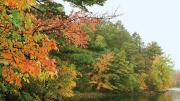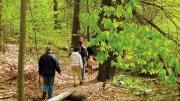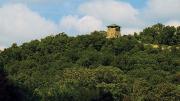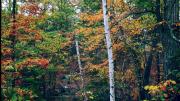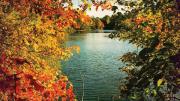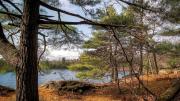On a Sunday afternoon, 20 people troop gamely into the Middlesex Fells Reservation for a free “Tree Walk” with Harvard botanist Walter Kittredge. Along the Dark Hollow Pond Trail, in the Stoneham section of the park, he points out a “forest seep community” rich with ferns, a grove of beeches, and a sunnier swath conducive to pignut hickory and hop hornbeam trees nestled in a sea of bright green, feathery Pennsylvania sedge.
In all, more than a dozen habitats are flourishing along the trail in a landscape essentially left to grow wild for more than a century. “This is an amazing place that was set aside,” says Kittredge, a senior curatorial assistant with the University Herbaria & Libraries. “Very few cities have anything like this.”
Aptly honoring an ancient word for rugged, rocky hills, The Fells, as the state-owned park is commonly called, is also a haven for urbanites. Its woodlands and abundant reservoirs sprawl across 3,400 acres that abut five communities—Malden, Medford, Melrose, Stoneham, and Winchester—and include more than 100 miles of walking and hiking paths. Visitors can also mountain bike, picnic, sail and paddle on Spot Pond, or romp with their dogs (off-leash!) at the Sheepfold. On a beautiful day, the meadow is often more alive with happy canines than with humans.
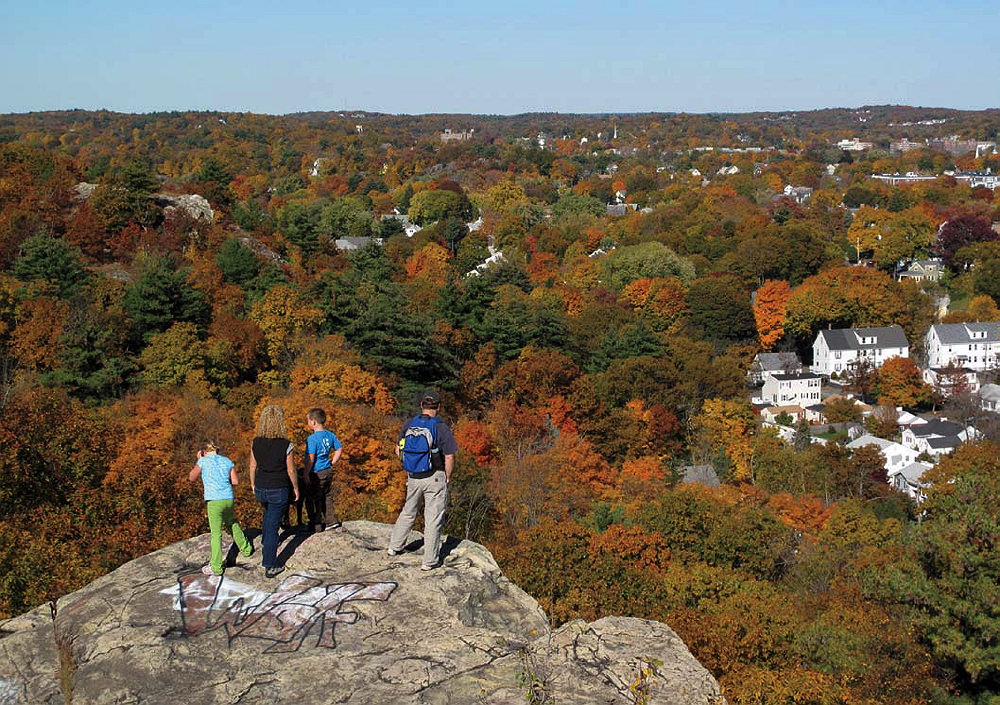
Panoramic views from a craggy summit
Photograph by Mike Ryan
That 10-acre tract, accessible from I-93 in Stoneham, also connects visitors to jaunts of varying lengths and rigor that zigzag across the whole preserve. Routes hugging the shorelines of North and Middle Reservoirs have the feel of being in rural Maine. A northerly trail leads to historic Bear Hill Tower, built in 1910. Or head south and take the long way to Wright’s Tower, the stone building that looms over Interstate 93, offering panoramic views of the region. The 1937 Works Progress Administration project was restored in 2008 by the state’s Department of Conservation and Recreation (DCR) and named for Elizur Wright, an abolitionist, mathematician, and pioneering insurance regulator. In the mid 1800s, as the American industrial revolution gathered strength, he and Wilson Flagg (a writer and naturalist who attended Harvard) were among the first to call for protection of land that became the Fells in 1894.
DCR organizes hikes to Wright’s Tower, along with other events and activities year-round. Check the website for fall calendar listings, public transportation and parking options, and maps with recommended bikeways and hikes, from the easy one-mile Spot Pond Brook Historic Trail to the “difficult” 6.9-mile Skyline Trail loop. Through mid September, Boating in Boston also rents rowboats, canoes, and paddleboards on Spot Pond.
Balancing multiple uses of public space is tricky. “We have had some user-conflicts among the dog walkers, hikers, walkers, and mountain bikers,” allows Thomas M. Walsh, DCR director of north region park operations. “People in general should be respectful of others in public and adhere to our regulations. We try to create the best experience here for everybody.”
The park is open from dawn to dusk. Mountain bikers are allowed only on certain trails on certain dates (outside of mud season), to limit the environmental damage. And, although dogs and their owners love to roam the Fells, there are leash and poop-scooping rules in place for aesthetic reasons, and because nearly a quarter of the park is covered with water. “The Fells is the watershed—the kidneys—for the Mystic River. And that is extremely important to the Boston area,” says Ron Morin, executive director of the nonprofit Friends of the Fells. Spot Pond and the Fells Reservoir are back-up water supplies controlled by the Massachusetts Water Resources Authority; the other reservoirs, by the Town of Winchester.
The 1,500-member Friends group, celebrating its twenty-fifth anniversary this year, promotes “harmonious use” of the park, he says, and preservation of “ecological, historical, and recreational resources.” To that end, it offers responsibly enjoyable ways to explore the natural world and the history of the Fells, including Babes in the Woods and Hide ’n’ Seek (at Belleview Pond), and StoryWalk™ (a self-led walk featuring the hunt for pages of a picture book posted along the trail) for younger children and their caregivers. The Friends also sponsors volunteer-led activities, such as Kittredge’s monthly tree hikes, historic walks with Douglas Heath (co-author, with Alison Simcox, of the Images of America books Middlesex Fells and The Lost Mill Village of Middlesex Fells), the annual Coastsweep Clean-up (September 29)and Fall for the Fells festival and trail run (November 4).
A new Friends partnership with Earthwise Aware, a nonprofit ecological education organization, has resulted in two year-round series: “Fells’ Biobliss: Biodiversity and Citizen Science,” a monthly group gathering to document ecosystems in areas around Long and Bellevue Ponds and Bear Hill Trail, explains Earthwise Aware president Claire O’Neill, and the twice-monthly “Fells Naturalists and Sketchers Circle.”
Yet without the activists Flagg and Wright, and others who joined their effort, sketchers would have scant trees, plants, and wildlife to record. Though the land had long been used as a respite by city-dwellers, it had also been farmed and logged since the 1700s. From 1640 to 1896, Spot Pond Brook was a locus of mill development, including the Hayward Rubber Company, founded by Nathaniel Hayward, co-inventor, with Charles Goodyear, of the vulcanization of rubber, according to Simcox and Heath. Hikers can still find archaeological remnants of the industrial community of Haywardville, like mill ponds and ancient foundations.
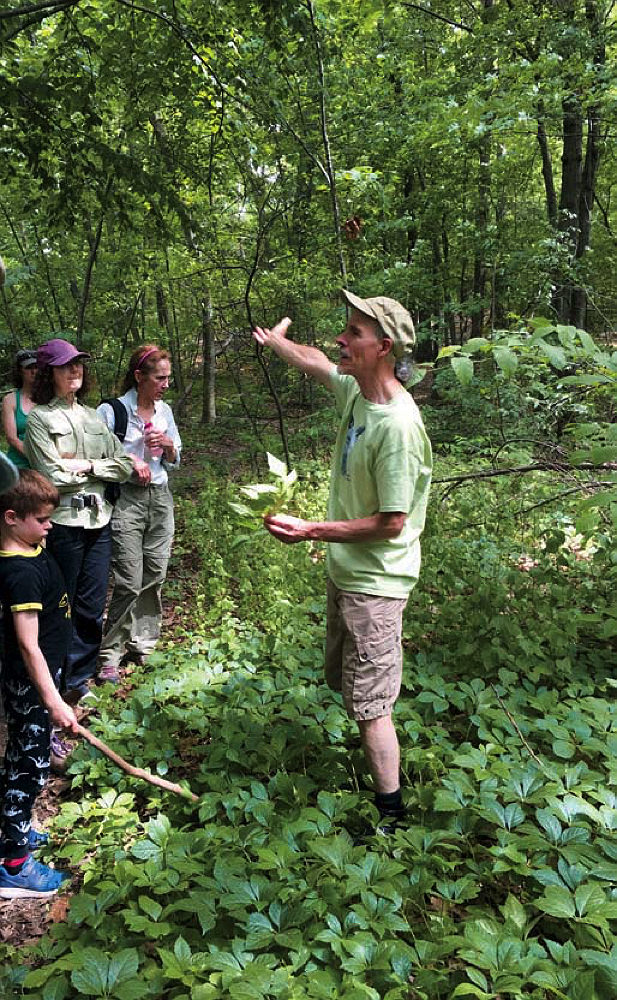
Harvard botanist Walter Kittredge leading one of his monthly tree hikes
Photograph by Nell Porter Brown/Harvard Magazine
In 1879, Sylvester Baxter, a newspaper writer and city-planning promoter, took up the conservation cause, introducing the term “fells” in a piece for the Boston Herald supplement: “…northerly from Boston lies a great tract of country, all stony hills and table-lands, almost uninhabited, and of wonderful picturesqueness, and wild rugged beauty...The nature of this region cannot be better characterized than by the application of the old Saxon designation fells, a common enough word in England, meaning a tract of wild stone hills, corresponding to the German word Felsen.”
George E. Davenport, a fern expert, botanical writer, and photographer (some of his papers and about 700 of his specimens are housed at Harvard), was also a tireless advocate, along with landscape architect Charles Eliot, A.B. 1882, son of Harvard president Charles William Eliot, and a founder of what’s now the Massachusetts-based Trustees, the first private, nonprofit conservation organization in the country.
Wright and Flagg formed the Middlesex Fells Association in 1880, and by 1893, the fledgling Metropolitan Park Commission (in which Eliot and Baxter played pivotal roles) had established not only the Fells, but the Blue Hills, Stony Brook, and Beaver Brook Reservations. The firm founded by Frederick Law Olmsted, A.M. 1864, LL.D. ’93, with Eliot in a new lead role there, was commissioned to design many elements of the multi-park system.
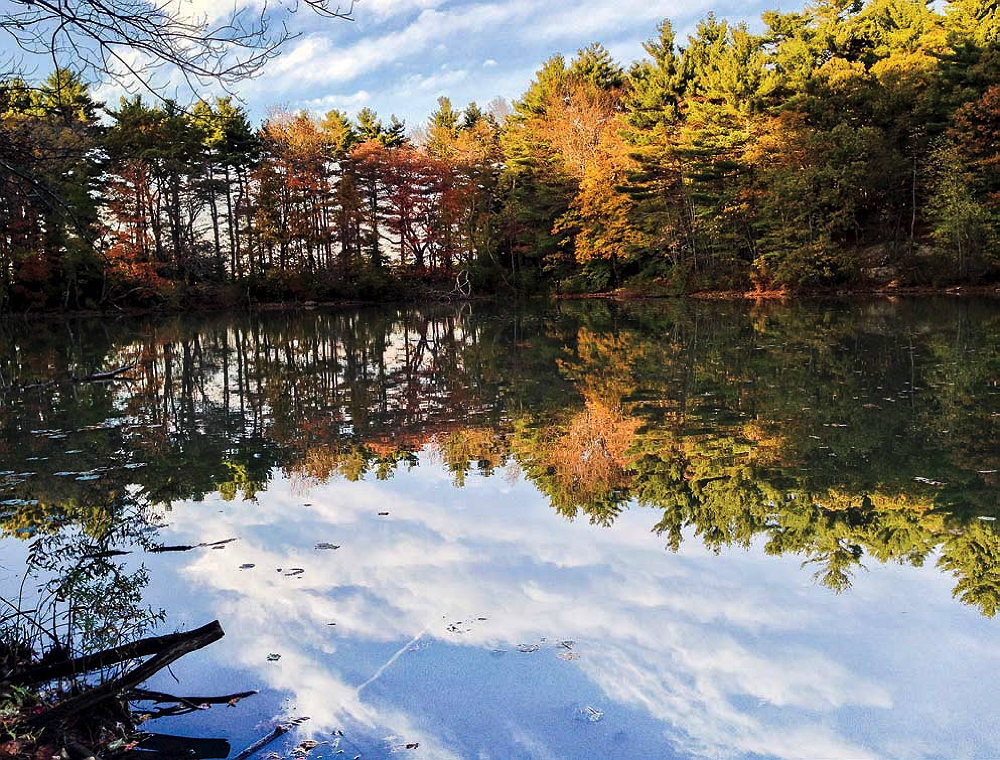
Reflections of fall in Quarter Mile Pond
Photograph by Mike Ryan
Everywhere across the Fells is evidence of these concerted—and continuing—efforts to protect and enjoy the land. On the tree hike, Kittredge highlights the threats of invasive plants, the dire need for trees in society, and the problem of mountain bikers gouging “rogue trails” that destroy the forest floor. Walkers snap photos and scribble notes about leaf and branch configurations. Kids skip about, finding pinecones. Parents carrying babies, and elders with walking sticks, take the trail more slowly, talking together. “It’s nice to connect people with trees and the natural history here,” says Earthwise Aware president O’Neill, a regular on Kittredge’s walks. “There are more than 60,000 species of trees in the world, 1,000 native in the United States. You cannot know them all. It’s very humbling. But, you are going to learn something new each time you go out.”
Kittredge has researched plant life in the Fells, co-authoring a nine-year study of changes in vascular fauna, and is currently conducting work on mosses and lichen. His hikes help people “value the forest for more than just recreation,” he says, making up for the “lack of nature education in our school systems.” He stops, for example, to explain a talus slope, and how the zone’s rich topsoil has long nourished a sugar maple-oak-hickory forest. “And you see that?” He points off the trail to a bitternut hickory tree. At 90 feet and 30 inches dbh (diameter at breast height), “it’s the largest tree of its kind in the Fells. It’s huge. And it’s probably not long for this world,” he adds, as walkers look on, wide-eyed. Then he smiles. “But its progeny are all over these woods.”
